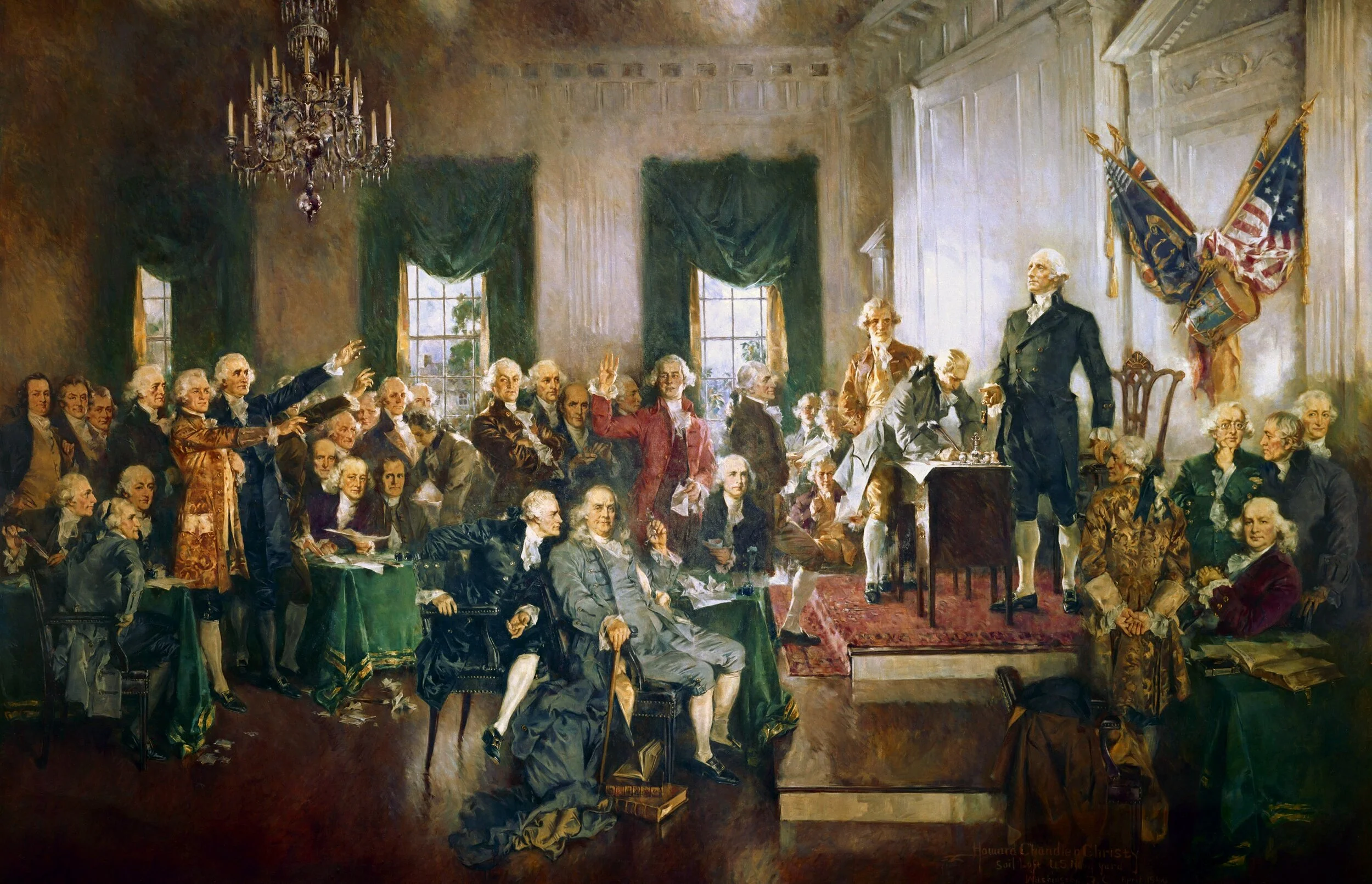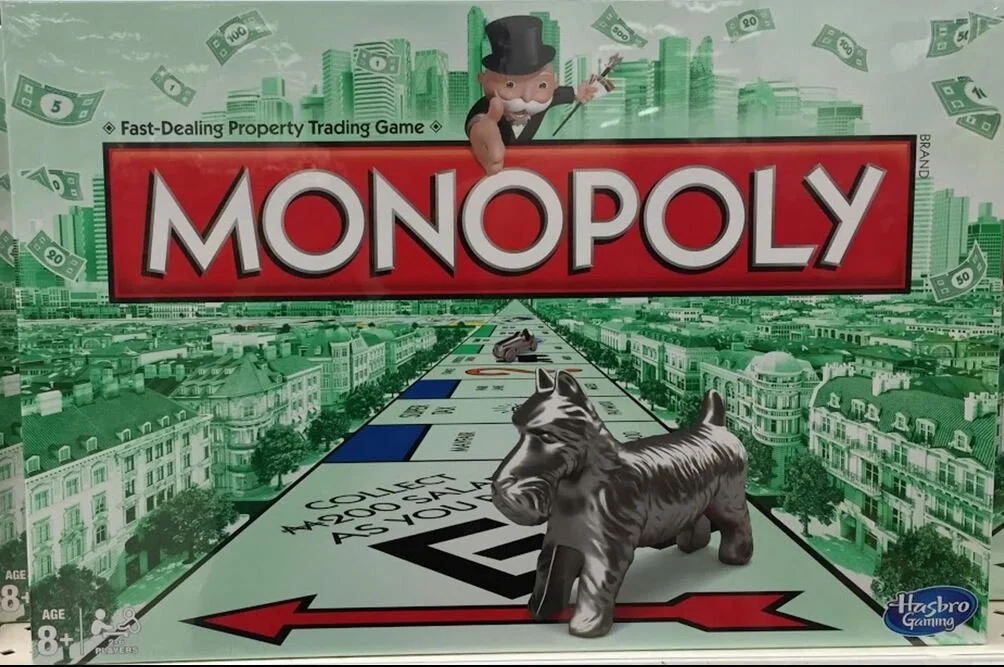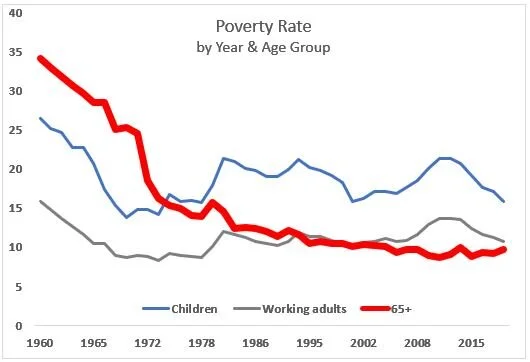Right is wrong; True is false; Kind is cruel
/One of the hardest challenges facing citizens is the need to recognize when something they know to be true stops being true. Human society isn’t not like the scientific world, where the laws of nature remain true forever. The force of gravity exerts a constant downward force in our world today, just as it did in our grandparents’ time and in the age of the dinosaurs. Gravity has never, in all of time, pushed anything upward.
But human society does change. The person who believes something that used to be true but no longer is true isn’t merely out of date. They are wrong. And they can do harm by continuing to do what they’ve been doing for years. When society decides to change circumstances, it quite often succeeds. If, after the change has been accomplished, people keep imagining circumstances as they were before . . . that’s dumb.
Something that used to be true. but stopped being true, is the special income needs of elderly Americans. If you go back far enough — to the 1930s and earlier — people too old to work were often destitute. As a group, retirees were the poorest people in America. It was a widespread problem and something needed to be done about it. In 1935, Franklin D. Roosevelt signed the Social Security Act into law:
Social Security is a good program that serves an important social objective. But because it has succeeded, it has reshaped American society. Old Americans are no longer as needy as before. Some few are, of course. But as a group, old people have more secure incomes and more wealth than younger citizens.
Social Security was just the first in a long series of actions taken to aid the elderly. Social Security guaranteed old people a reliable income after they retired. Later government programs provided tax-payer funded health care and cheap medicine for old people. Government isn’t alone in giving preference to the old. The private sector eagerly gives senior citizen discounts at hotels, restaurants and other retail outlets. Some argue that those discounts are a marketing strategy aimed at capturing a more discerning segment of the customer base. But, whatever the motive, American retailers give a better deal to the old than to the young.
Evidence of this economic imbalance follows below. But perhaps it will help to illustrate the injustice by comparing American economic life to the Monopoly board game.
Before Social Security was enacted, most people lost their income when they retired. But they still had living expenses. They were like a Monopoly player who must keep going around the board but can no longer collect $200 when they pass “Go.” That is a serious disadvantage.
The Social Security program ensured that retired people have a guaranteed income after they stop working. They still collect $200 like before. This keeps them in the game.
But little by little since the 1930s, more decisions have favored old people. The American economy today is rigged to their advantage. It is like a Monopoly game where some players get to go around 10 times buying up properties before other players are allowed to start, and who get to ignore the bad Chance and Community Chest cards, and who get to pay $40 when they land on a $400 hotel property.
And its not just the rules of the game that have changed. The conditions for American citizens are affected by historical events as much as by deliberate policies.
Going back to the Monopoly example, suppose you had bought up the red properties and put houses on them when the dog runs through the room and scatters them all. The group decides that, unfortunately for you, your houses have to go back into the bank and you must buy them again. Then, a few turns later, someone spills their drink on your corner of the board and you have to begin yet again.
With that much bad luck, you’ll not win the game no matter how much skill you have.
The Monopoly example is an apt description of the unfairness of American society today. And the victims of it are the young generation — especially the young adult millenials. They are the victims of both unfair government policies and cruel historical events.
The national government spends far more money on programs for the old than for the young. And spending for the old is the fastest-growing part of the national budget. More than a third of every dollar the national government spends is a gift to people over 65. And it’s getting worse. The Congressional Budget Office has reported that by 2029, government will be passing more than half its spending to the old. And remember, those benefits are not targeted to retirees who need help. They are targeted to old people in general, regardless of need. Much of it will go to individuals with substantial private wealth.
Source: US Census Bureau
Poverty rates have declined for all parts of the American population since 1960. But the benefits to old people are far greater than for other groups. For citizens 65 and older, Poverty has fallen from 35% in 1960 to less than 10% today. The decline has been steady and consistent.
Poverty among the over 65 population has never risen above 12% in the past 30 years. For working-age adults, poverty rates are higher now than in the 1970s and also higher than for retirees. The situation is worst for children and families with children. Their rate of poverty has been higher than retirees’ poverty every year since 1975. Most years it is 5% to 10% higher. The children’s poverty rate has never fallen as low as 12% since 1960.
The age group with the least poverty is also the group with the most wealth. Old people are more likely to own their homes. They have more investment assets than young adults. That isn’t surprising given that they’d had more time to build it up. What is surprising is how fast the gap has grown in the past couple of decades:
In 1984, households headed by people age 65 and older were worth just 10 times the median net worth of households headed by people 35 and younger.
But now that gap has widened to 47-to-one, marking the largest wealth gap ever recorded between the two age groups.
"We don't know how the story ends, but we know how the story is beginning," said Paul Taylor, executive vice president of the Pew Research Center. "At the beginning, today's young people are not doing better than yesterday's young adults."
Government policies have been the main cause of the tremendous shifts discussed here. But they are not the only factors. Plain luck can boost a group of people, or pull another group down. Recent studies from both popular news sources and scholarly sources show that more persistent bad luck has befallen the millennials than any other generation in American history. They were hit by the severe economic recession of 2009, and again in 2020 by the extreme economic sacrifice of the coronavirus quarantine.
This report by The Washington Post shows that group earnings for the millennial generation has not improved in 20 years — a fate no previous generation suffered. The Great Depression was worse, but the generation of Americans who came up during the Great Depression benefited (economically) from WWII and the post-war economic boom. For the millennials, bad luck has followed more bad luck.
The pain of the current recession follows the jobless recovery that followed the 9/11 terrorist attacks and then the 2008 Great Recession — another jobless recovery.
“The story here is not just that it’s a bad recession, and that it’s hitting young people more, but that it’s hitting people who have already been hit,” economist Gray Kimbrough told the Post.
This notion that the millennials are the most unlucky generation is compounded by the effects of the coronavirus quarantine. But it was already being talked about years earlier. As far back as 2013, writers were already noting how fortune has wrecked the millennials’ prospects. And some predicted, before 2020, that “the next recession will destroy millennials.”
Millennials got bodied in the downturn, have struggled in the recovery, and are now left more vulnerable than other, older age cohorts. As they pitch toward middle age, they are failing to make it to the middle class, and are likely to be the first generation in modern economic history to end up worse off than their parents. The next downturn might make sure of it, stalling their careers and sucking away their wages right as the Millennials enter their prime earning years.
Here’s a video summarizing the “unluckiest generation argument:
To summarize, old and retired people were genuinely needy — generations ago. Government responded with effective solutions including the Social Security program of 1935 and Medicare in the 1960s. Those programs, and others like them, lifted the elderly out of poverty. Those programs worked so well that Americans over 65 went from being the group with the greatest poverty to the wealthiest part of society. American policies and practices — both in government and the private sector — continue to shovel benefits toward old people, taking them away from children and young adults.
The challenge for citizens today is to choose between consistent programs, or consistent values. Should we keep doing what we did in the past, even though conditions have changed? Or should we aim for the highest and most noble goals? Seeking a fairer society today means more help to the young and less for the old!










